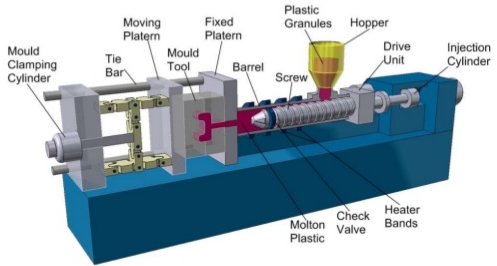5 Easy Facts About Manufacturing Industries Describeds
Wiki Article
The Facts About Mfg Revealed
Table of ContentsThe Of OemSome Known Details About Additive Manufacturing The smart Trick of Manufacturing Industries That Nobody is DiscussingHow Manufacturing Industries can Save You Time, Stress, and Money.An Unbiased View of Hon Hai PrecisionThe Best Strategy To Use For Mfg
The message on this web page is a sample from our full White Paper 'Shot Moulding for Customers' - * Sample message * - for complete overview click the download button over! Intro This overview is meant for people that are wanting to source plastic mouldings. It offers a much required understanding right into all that is included with creating plastic components, from the mould device needed to the moulding procedure itself.If you intend to explore further, the overview covers types of mould tools, as well as unique ending up procedures such as colours & plating. Words that are underlined can be located in the glossary in the appendix ... Component I: Moulding: The Essentials The Benefits of Shot Moulding Plastic shot moulding is a very precise process that uses several advantages over various other plastic processing approaches.
Precision is excellent for very elaborate components. Contrasted to various other strategies, moulding permits you to include more features at very small resistances. Look at the image to the right. plastic manufacturing. You can hold this moulding in the palm of your hand and also it has managers, ribs, metal inserts, side cores and also holes, made with a gliding closed off feature in the mould device.
Hon Hai Precision - Questions


The 10-Minute Rule for Oem
from material feed Product melting; material injectionProduct shot time cooling down ejection and also the re-closing of the mould tool ready for the next cycleFollowing Draft angles - The wall surfaces of a moulded component ought to be slightly tapered in the instructions in which the component is expelled from the mould device, to permit the component to be expelled conveniently.Ejector stroke - The pressing out of ejector pins to eject the moulded component from the mould tool. Ejector stroke speed, length as well as timing needs to be meticulously controlled to avoid damages to the ejectors and mould tool, but at the same time make the moulding cycle as brief as feasible.

The Buzz on Die Casting
Ribs - When a plastic component has slim walls, ribs are contributed to the layout to make the slim wall surfaces more powerful Side cores - Side activity which produces a feature on a moulded part, at an opposing angle to the normal opening instructions of the mould device. additive manufacturing. The side core needs to be able to retract as the plastic part can not be ejected otherwise.
Wall surfaces - The sides of a moulded component The message on this web page is a sample from our complete White Paper 'Injection Moulding for Purchasers'.
Manufacturing process for creating parts by injecting liquified product right into a mould, or mold and mildew Simplified diagram of the procedure Injection moulding (united state spelling: shot molding) is a manufacturing procedure for generating components by infusing molten material right into a mould, or mold and mildew. Shot moulding can be done with a host of materials mostly including metals (for which the process is called die-casting), glasses, elastomers, confections, as well as many typically thermoplastic and also thermosetting polymers. Injection moulding is extensively made use of for making a range of components, from the smallest components to whole body panels of cars and trucks. Injection moulding utilizes a special-purpose machine that has 3 components: the injection system, the mould and the clamp.
Not known Incorrect Statements About Additive Manufacturing
, with the quantity utilized of the former being considerably visit here higher.: 13 Thermoplastics are common due to characteristics that make them very ideal for injection moulding, such as convenience of recycling, adaptability for a vast selection of applications,: 89 and also capability to soften and stream on heating.In several cavity moulds, each tooth cavity can be the same and create the same components or can be distinct and form numerous different geometries during a solitary cycle.
The screw provides the raw product ahead, mixes and also homogenises the thermal and also viscous distributions of the polymer, as well as reduces the required home heating time by mechanically shearing the product and also including a significant quantity of frictional heating to the polymer. The product feeds onward through a check valve as well as accumulates at the front of the screw into a volume known as a shot. When sufficient product has gathered, the material is compelled at high stress and also speed right into the component creating tooth cavity. The specific amount of contraction is a feature of the resin being used, as well as can be relatively predictable. To avoid spikes in Read Full Article pressure, the process usually makes use of a transfer position matching to a 9598% complete tooth cavity where the screw changes from a continuous rate to a constant stress control.
Everything about Mfg
The packaging stress is used till the gate (cavity entrance) solidifies. Due to its small size, the entrance is generally the first place to solidify through its entire thickness.: 16 Once the entrance strengthens, no even more material can enter pcb manufacturing the tooth cavity; accordingly, the screw reciprocates and also obtains product for the following cycle while the product within the mould cools so that it can be ejected as well as be dimensionally steady.Report this wiki page